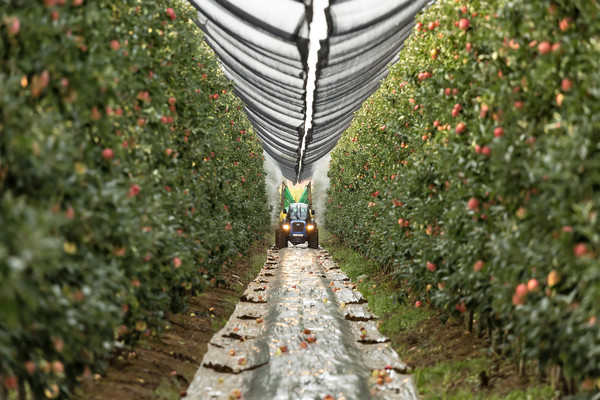
Tractors, European market down at the start of the year
After a strongly profitable 2021, the first quarter of the new year saw a slight contraction for the European tractor market, which lost 5.3%. Nevertheless, demand for agricultural machinery continues to remain at high levels. War in Ukraine, rising raw material prices, and logistics problems are the main unknowns for the coming months
The European tractor market is slowing down in the first quarter of 2022. This is indicated by figures released by the European Committee of Agricultural Machinery Manufacturers, CEMA, which quantifies the number of vehicles sold across Europe at 40,000 units between January and March (-5.3% compared to the same period last year).
National markets. The contraction, considered natural after a very positive 2021 final balance (180,000 vehicles registered, +16.6% over 2020), affected all the main countries of the old continent, except France which, with 6,970 registrations (+1.8%), confirmed the numbers of the first quarter of 2021.
A minus sign, however, for the Federal Republic of Germany. At the top in Europe in terms of number of vehicles sold (just over 8,000), Germany leaves 6% on the ground. This is more or less the same percentage contraction recorded by Spain (2,460 units registered) and the United Kingdom (3,440), which dropped - respectively - by 7% and 6.8%. There was also a setback for the Italian market, where tractor registrations stopped at 5,370 (-9.9%). Despite this drop, partly due to the comparison with an exceptionally positive first quarter of 2021 (+57.6% compared to 2020), the figure at the beginning of the year nevertheless indicates a higher level of sales than in pre-Covid years.
Driving the Italian agro-mechanical sector, which is still characterised by sustained demand, are above all the facilitation tools put in place by the government to promote the transition towards agriculture 4.0. Among the emerging countries of the "old continent", in the first three months of 2022 Poland recorded -2.1%, effectively confirming the good performance of 2021. That year marked a real exploit for the Polish agro-mechanical sector, with a final balance of over 20 thousand registered machines (+43% over 2020). Bucking the European trend is the performance of the Czech and Hungarian markets, which recorded 1,490 (+56.2%) and 1,060 (+34.2%) units sold respectively.
Russia, sales at a standstill in April. Of particular interest, then, is the figure for Russia, with surveys available up to April. Russia, as is well known, is on 'special watch' due to the harsh sanctions imposed on the country in the aftermath of the invasion of Ukraine and the repercussions these may have on the agro-mechanical sector.
According to the market report released last May by the Russian Agricultural Machinery Manufacturers' Association, between January and April the sector recorded a drop in registrations, but this was a limited decline and not a collapse.
The balance for this first part of the year is -4.3%, with 11,160 units sold (11,665 in the same period of 2021), essentially in line with the European market trend. On the other hand, the figure for April alone seems to foreshadow a change in scenario as the contraction in sales tends to become more substantial (-12,1% compared to April 2021). Tractors in the under 40 horsepower range (-42%) and in the over 100 horsepower range (-33.3%) are particularly penalised.
The military crisis. The performance of the continental market in the coming months also appears to be dependent on the evolution of the conflict in Eastern Europe. Not so much in terms of sales volumes - Russia and Ukraine generate barely 5% of European manufacturers' turnover - but in terms of the consequences that the war is having on the raw materials sector. As is well known, the crisis between the two countries has aggravated the tensions on energy and industrial commodity prices that had already manifested themselves in 2021 as a consequence of increased demand, the resurgence of the pandemic in some countries, problematic situations for logistics, and speculative movements.
For the European tractor market, which was still at a high level at the beginning of the year despite the drop in registrations, this situation led to a sudden deterioration in company sentiment, as CEMA's Observatory has also noted. In just two months - between March and April - the BCI indicator, which measures the confidence of European manufacturers, dropped by as many as thirty points (from 53 to 20). The drop continued in May, albeit to a lesser extent (from 20 to 16 basis points). Of particular concern are rising commodity prices and problems in the supply of raw materials, which, CEMA explains, in several cases led some European manufacturers to temporarily halt production facilities.
On the other hand, demand for agricultural technology continues to remain buoyant, as confirmed by agro-mechanical companies' turnover forecasts for the next six months. In fact, a large majority of the companies monitored by CEMA, 76%, estimate a growth or essential stability in business, while only 24% expect a reduction in turnover.








